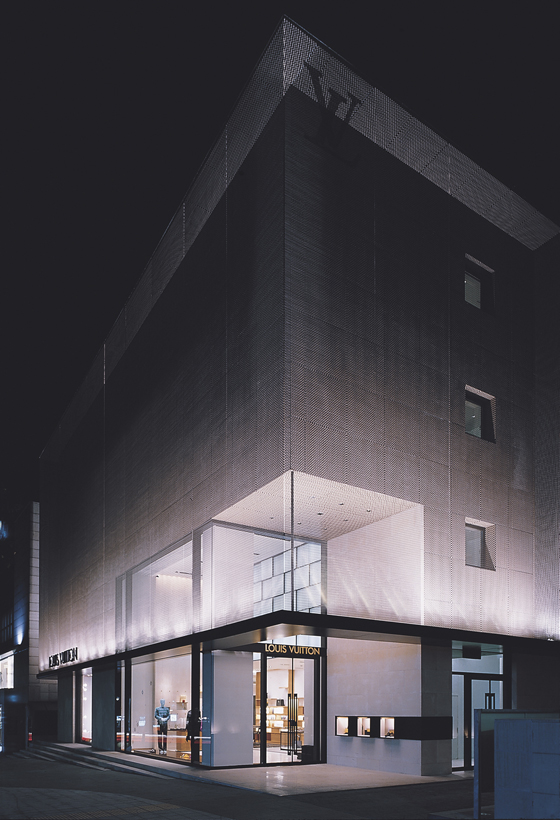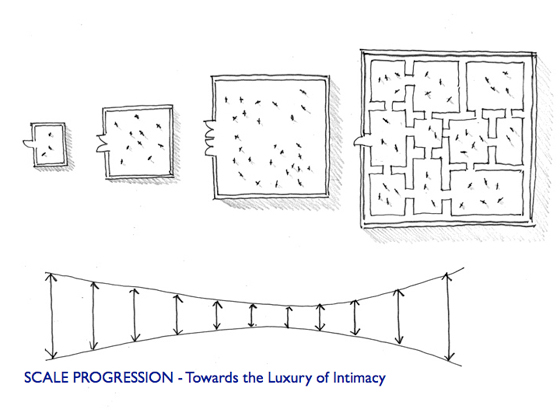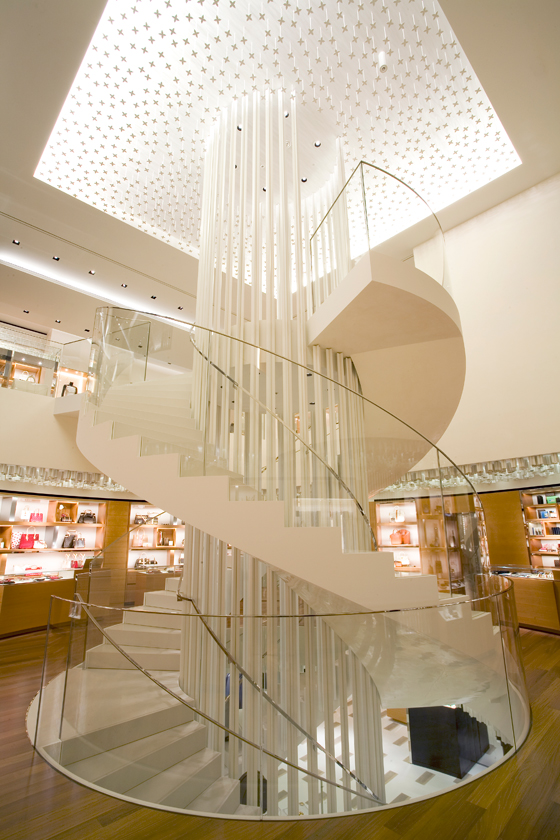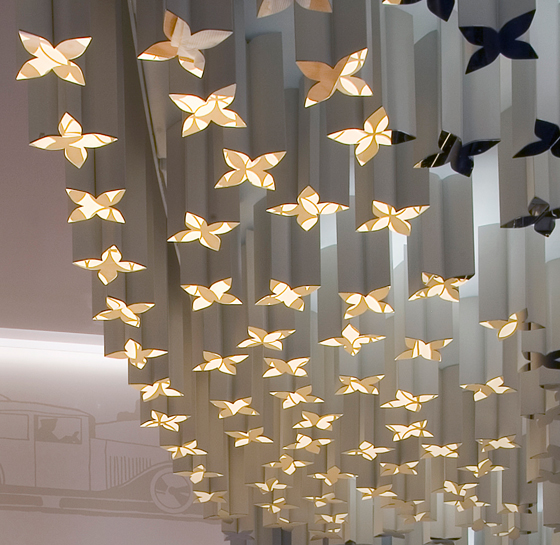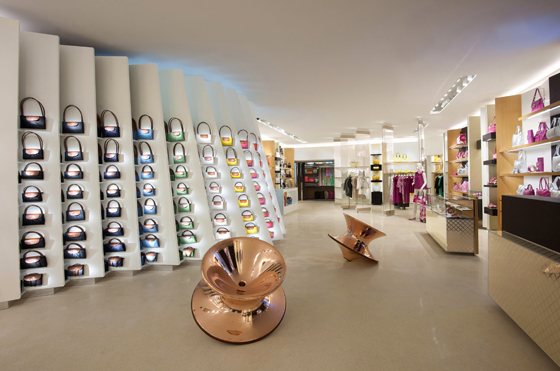Custom luxury retail experiences
Text by Laurence Picot
27.09.13
This page has been archived and is no longer updated
The conundrum for the luxury industries? How do you incite thousands of buyers to enter a store every day while maintaining a feeling of exclusivity? The trend is for Mega Maisons, an invention by Carbondale architects. Text by Laurence Picot.
The tall windows at Carbondale look out onto the equestrian statue of Louis XIV on the Place des Victoires in Paris. How amusing being faced with an allusion to the historic inventor of the luxury industries on a daily basis, while busy designing the current temples erected to their glory. This association held in such high esteem by the Sun King would hardly be appropriate, however, for a meeting with Eric Carlson. The fact that he is there is enough. Discreet and as straightforward as his preferred mode of transport, a bicycle, the American architect and his French business partner Pierre Tortrat greet me, and we sit down around a table surrounded by sketches of their flagship projects. It’s an enormous responsibility to embody the sacred image of all these brands that generate astronomic profitability margins. “The edifices destined to become the jewels of the luxury industry are of course bespoke projects.” After working for the urban planner Peter Calthorpe in San Francisco, Barcelona-based architect Oscar Tusquets, and famous Dutch architect Rem Koolhaas at OMA, Eric Carlson co-founded and led the Department of Architecture at Louis Vuitton for seven years. Designing window displays, the entire sales surface area as well as the exteriors meant that he had a ring-side seat from which to learn about the metamorphosis of luxury. It’s all about preserving exclusivity for an appreciably important section of the public.
Inclusive-exclusive architecture
Boutique and Store evolution drawing, Carbondale Studio / Eric Carlson
In 2004, he founded his own agency Carbondale, while developing an innovative concept that would provide the answer to the problem: inclusive-exclusive architecture would increase the total surface area while introducing the type of rooms that you might come across in a huge mansion, to provide a more intimate experience for the customers. It was the birth of the Mega Maison. He designed the Vuitton stores in Omotesando, Roppongi and Aoyama in Japan followed by stores in Seoul, and the definitive model of its kind, the Louis Vuitton flagship on the Champs-Elysées, that achieves sales of 20,000 euros per day, in 2010. Carbondale have also distinguished themselves recently with the design of two Longchamp Brand Stores in Hong Kong, one of which is symbolically named Maison 8, a mythical number in Asia that embodies the symbol of prosperity.
Louis Vuitton Store, Midland Square, Nagoya (Japan)
“From the 18th to the end of the 19th century, luxury brands possessed small family-run boutiques operating in a space that was inversely proportional to their reputation; elitism came with responsibilities. They then started to expand into foreign countries and sales counters were introduced in the first department stores. This typology remained unchanged until the 1980s. The democratisation of luxury created a surge in demand for such industries. You had to welcome people, be open, and tear down the existing boundaries… This gave rise to increasingly larger retail spaces with more window space so that passers-by could see the entire range of products on offer. Translucent buildings were erected in the name of leading brands. But there was one problem, the customers that were shopping for luxury goods were not the same as the ones who consumed mass-produced goods. There was a risk that the new ‘open spaces’ reserved for luxury goods would resemble upscale supermarkets and erase any feeling of exclusivity. In 2005, the model collapsed. The public visited the boutiques in much smaller numbers, and turnover gradually dried up. The solution? The Mega Maisons.” The evolution of luxury outlets according to Eric Carlson; his pencil strokes are worth a thousand words.
